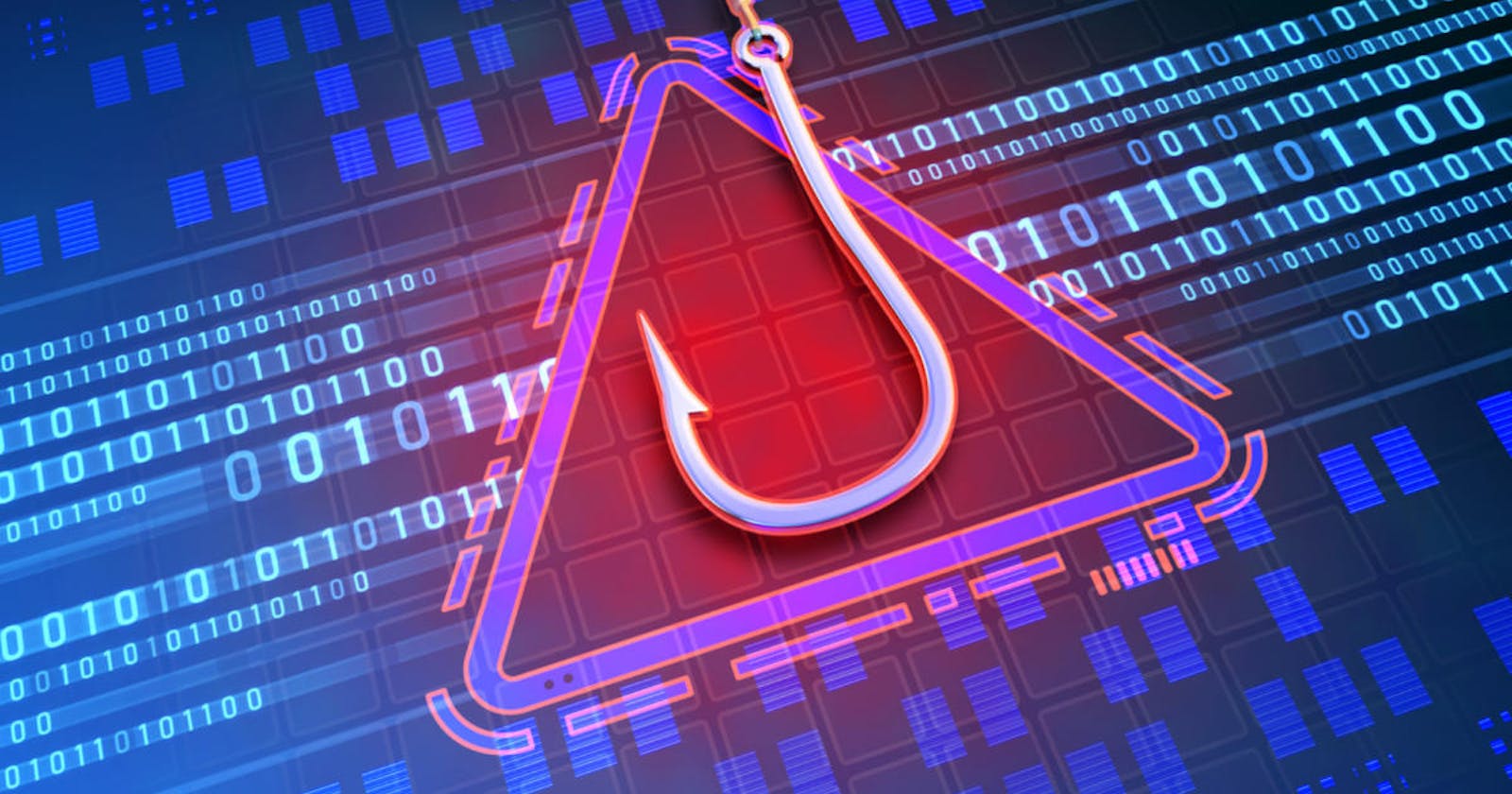Table of contents
Introduction
Phishing attacks have become a common occurrence since the Internet was introduced in the 1990s. While phishing attacks intrude on victims' private information, people can protect themselves against them with the right knowledge and preparation. Here, I'm going to explain how you can avoid/prevent phishing.
What is Phishing, and Why Does it Matter?
Phishing is an attack where the threat actor impersonates a reliable individual or business to convince potential victims that it is safe to transfer money or reveal sensitive information.
Due to the fact that hackers frequently employ phishing emails to trick victims into downloading software and starting an attack, phishing frequently plays a significant role in Trojan and ransomware attacks.

Phishing scams are one of the most common types of attacks you're likely to encounter. They are a highly profitable attack method for cyber-criminals, with thousands of victims each year. Fortunately, because phishing scams are so common, they are avoidable if you know how to spot and avoid them.
How to prevent phishing attacks
Here are 10 simple tips for identifying and preventing phishing scams.
1. Understand what a phishing scam looks like.
New phishing attack methods are constantly being developed, but they all share characteristics that can be identified if you know what to look for. There are numerous websites that will keep you up to date on the latest phishing attacks and their key identifiers. The sooner you learn about the latest attack methods and share them with your users through regular security awareness training, the more likely it is that you will avoid a potential attack.
2. Do not follow that link.
Even if you know the sender, it's not a good idea to click on a link in an email or instant message. The very least you should do is hover over the link to see if the destination is correct. Some phishing attacks are quite sophisticated, with the destination URL appearing to be a carbon copy of the legitimate site, set up to record keystrokes or steal login/credit card information. If you can go directly to the site through your search engine rather than clicking on the link, you should.
3. Install free anti-phishing extensions
Most browsers now allow you to download add-ons that detect malicious websites or alert you to known phishing sites. They are typically free, so there is no reason not to have this installed on every device in your organisation.
4. Don't give your personal information to an unsecured website.
If the website's URL does not begin with "HTTPS" or if there is no closed padlock icon next to the URL, do not enter sensitive information or download files from that site. Sites lacking security certificates may not be intended for phishing scams, but it is always better to be safe than sorry.
5. Change passwords on a regular basis.
If you have online accounts, you should get into the habit of rotating your passwords on a regular basis to prevent an attacker from gaining unrestricted access. Because your accounts may have been compromised without your knowledge, adding an extra layer of security through password rotation can help prevent ongoing attacks and keep potential attackers out.
6. Pay attention to those updates
It can be annoying to constantly receive update alerts, and it can be tempting to delay or disregard them. Avoid doing this. Security updates and patches are published for a cause, most frequently to close security gaps in order to stay current with contemporary cyber-attack techniques. If you don't upgrade your browser, you can be vulnerable to phishing attacks that could have been easily prevented by taking use of known flaws.
7. Set up firewalls.
Firewalls are an effective method of preventing external attacks because they act as a barrier between your computer and an attacker. When used in tandem, desktop and network firewalls can improve your security and reduce the likelihood of a hacker infiltrating your environment.
8. Don’t be tempted by those pop-ups
Pop-ups are not only annoying; they are frequently associated with malware as part of attempted phishing attacks. Most browsers now let you download and install free ad-blocking software, automatically blocking most malicious pop-ups. If you do manage to avoid the ad blocker, don't be tempted to click! Sometimes pop-ups will try to trick you about where the "Close" button is, so always look for an "x" in one of the corners.
9. Don’t give out important information unless you must
As a general rule, unless you are completely confident in the site, you should not willingly provide your credit card information. If you must provide your information, make certain that the website is genuine, the company is legitimate, and the site itself is secure.
10. Have a Data Security Platform in place to detect signs of an attack
If you are unfortunate enough to be the victim of a successful phishing attack, it is critical that you detect and respond quickly. By automatically alerting on anomalous user behaviour and unwanted changes to files, a data security platform relieves some of the pressure on the IT/Security team. Suppose an attacker gains access to your sensitive information. In that case, data security platforms can assist you in identifying the affected account so that you can take appropriate action to prevent further harm.
Conclusion
You don’t have to live in fear of phishing scams. By keeping the preceding tips in mind, you should be able to enjoy a worry-free online experience. Remember there is no single fool-proof way to avoid phishing attacks.
